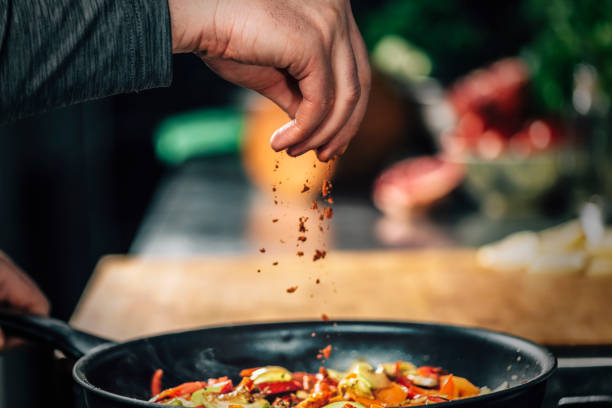Culinary Alchemy: Transforming Everyday Ingredients
Discover the art of culinary transformation as we delve into innovative techniques that elevate ordinary ingredients into extraordinary dishes. From humble vegetables to common pantry staples, learn how to unlock hidden flavors and textures, creating gastronomic wonders in your own kitchen.

Pickling Beyond Cucumbers
Pickling is an age-old preservation technique that’s experiencing a modern revival. While cucumbers might be the first thing that comes to mind, the possibilities for pickling are endless. Experiment with quick-pickling vegetables like radishes, carrots, or even watermelon rinds for a tangy, crunchy addition to salads or sandwiches. For a unique twist, try pickling fruits like strawberries or grapes – their natural sweetness combined with the pickling brine creates an intriguing flavor profile perfect for cheese boards or as a garnish for cocktails. Don’t limit yourself to vinegar-based brines; explore fermented pickles using salt brine for a probiotic-rich option. The world of pickling offers a playground for culinary creativity, allowing you to preserve seasonal produce and add bursts of flavor to your dishes year-round.
Infusion Innovation
Infusion is a simple yet powerful technique that can transform both food and drink. By allowing flavors to mingle over time, you can create unique and complex taste experiences. Start with infused oils – try steeping herbs like rosemary or thyme in olive oil for a fragrant cooking base. For a sweeter option, infuse honey with lavender or vanilla for a gourmet touch to your tea or baked goods. In the realm of beverages, experiment with infused spirits – create your own flavored vodka with fruits, herbs, or even spices like cinnamon or star anise. Don’t forget about non-alcoholic options – infused waters with cucumber, mint, or citrus fruits can make staying hydrated a more enjoyable experience. The key to successful infusion is finding the right balance of flavors and infusion time to create harmonious and exciting taste combinations.
The Art of Smoking
Smoking isn’t just for meats – this technique can add depth and complexity to a wide range of ingredients. Experiment with smoking vegetables like eggplants or bell peppers for a rich, smoky flavor that elevates dips and spreads. Try your hand at smoking cheeses for a unique twist on a cheese board. Even desserts can benefit from a touch of smoke – smoked chocolate or smoked salt can add an intriguing layer of flavor to sweet treats. For those without access to a traditional smoker, try using a stovetop smoker or even create a makeshift smoker using a wok and some wood chips. The key to successful smoking is choosing the right wood for your ingredient – lighter woods like apple or cherry work well with delicate flavors, while stronger woods like hickory or mesquite pair better with robust ingredients.
Texture Transformation
Texture plays a crucial role in our culinary experiences, and learning to manipulate it can take your cooking to the next level. Explore techniques like dehydration to create crispy vegetable chips or fruit leather. Try your hand at molecular gastronomy techniques like spherification to create bursts of flavor in unexpected forms. Experiment with different cooking methods to achieve varying textures – for example, try roasting cauliflower for a crispy exterior and creamy interior, or use a spiralizer to transform zucchini into noodle-like strands. Even simple ingredients like nuts can be transformed through techniques like candying or spice-roasting. By paying attention to texture, you can create dishes that are not only flavorful but also excitingly diverse in mouthfeel.
Culinary Alchemy Tips
-
Always start with high-quality, fresh ingredients for the best results
-
Experiment with unexpected flavor combinations to discover new favorites
-
Don’t be afraid to fail – some of the best culinary innovations come from mistakes
-
Keep a culinary journal to record your experiments and successes
-
Invest in a few key tools like a good thermometer and kitchen scale for more precise results
-
Learn the science behind cooking techniques to better understand how to manipulate ingredients
-
Taste frequently throughout the cooking process to adjust flavors as needed
-
Practice patience – many transformative techniques require time to develop full flavor
In conclusion, culinary alchemy is about more than just following recipes – it’s about understanding the potential of ingredients and techniques to create something truly extraordinary. By mastering these transformative techniques, you can elevate your cooking from mere sustenance to an art form. Whether you’re caramelizing, pickling, infusing, smoking, or experimenting with textures, the key is to approach your culinary adventures with curiosity and creativity. So, step into your kitchen laboratory and start experimenting – you never know what delicious discoveries await!





